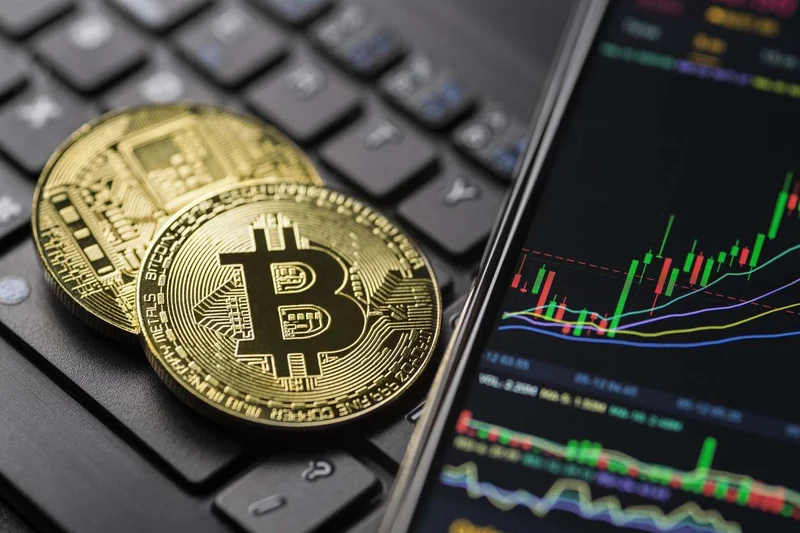The day the screens bled red, it felt like the sky was falling. Headlines like Crypto prices plunge as Trump hits China with 100pc tariffs screamed of a “bloodbath,” a market in “freefall.” And they weren't entirely wrong. In the span of 24 hours, a geopolitical tremor originating in Washington D.C. sent a tidal wave across the digital asset space, wiping out a staggering $200 billion in value and triggering the largest liquidation event in crypto's history. More than the COVID crash. More than the FTX collapse. It was a moment of pure, unadulterated panic.
But now that the dust is settling, I’m looking at the very same data, and I don't see an ending. I see a beginning. I see the moment a volatile, speculative asset class was slammed with a world-class haymaker from the heavyweight champion of macroeconomics—and it didn't just stay on its feet. It got back up and stared right back.
This wasn't a crypto story. This was a story about crypto's place in the world.
Let's be perfectly clear about what happened on October 10th. This wasn't a Terra/Luna-style internal collapse. It wasn't an FTX-style fraud. The Bitcoin protocol didn't break; Ethereum's code didn't fail. This was an external shock, pure and simple. President Trump’s sudden announcement of a 100% tariff on China was a classic "risk-off" catalyst, the kind of event that sends investors fleeing from anything perceived as risky and scrambling for the perceived safety of cash. The crypto market, now deeply intertwined with global finance, felt the full force of that fear.
Imagine a city built on a fault line. For years, engineers have been designing buildings to withstand seismic events. Then, the "big one" hits. The ground shakes violently. Some structures—the over-leveraged, the poorly designed—inevitably crumble. That’s what we saw with the $19 billion in liquidations. It was a painful, brutal cleansing of excessive speculation.
But what do you look at after the shaking stops? You look at the foundations. You look at the core infrastructure. Did the bedrock crack? Did the city's most important structures hold? When I saw the on-chain data from that day, I honestly just sat back in my chair, speechless. Because the foundations didn't just hold. They barely even creaked.
During the absolute height of the panic, as Bitcoin’s price plunged toward that psychologically terrifying $100,000 mark—fueling questions like Will Bitcoin Price Drop Below $100,000 This Week?—something extraordinary was happening beneath the surface. We can see it thanks to a metric called Spent Coins Age Bands—in simpler terms, it’s a tool that lets us see if the "old money" or the "new money" is selling their Bitcoin.

As the markets spiraled, the data shows a massive spike in selling from newer wallets. These were the weak hands, the tourists, the traders who were in it for a quick gain and fled at the first sign of trouble. But the wallets belonging to long-term holders, the veterans who have been in this space for years? They went almost completely silent. Their spending activity dropped off a cliff.
Think about what that means. The most experienced participants, the ones who understand this technology best, saw a 20% flash crash not as a reason to panic, but as background noise. But it gets even better. While the weak hands were selling, the total number of Bitcoin holders actually increased. From 56.92 million to 56.98 million. This wasn't just a price chart wiggling; it was a live, global referendum on conviction, with billions of dollars voting in real-time and the results showed that the core believers are not just holding on, they're absorbing the supply from those who are fleeing.
What does it say about an asset class when a catastrophic price drop is seen by its core community as a discount? It tells you that you're not dealing with a fleeting fad anymore. You're dealing with a fundamental shift in belief.
Of course, the aftermath was messy. Arthur Hayes correctly pointed out that centralized exchanges' auto-liquidation systems probably turned a bad situation into a catastrophe for many altcoins. And we can't ignore the human cost; people who used irresponsible leverage lost everything. This is our moment of ethical consideration—a reminder that with the power of this new financial system comes immense personal responsibility. This technology offers freedom, but it doesn't offer a safety net from foolish risks.
Yet, look at the rebound. Bitcoin didn't just stabilize; it roared back above $111,000, fueled by a bullish divergence that suggested the selling pressure had exhausted itself. The market didn't just survive the stress test; it passed it. One user on X, Quinten Francois, put it perfectly: "You wished you bought during the COVID crash. This is your COVID crash." He's reframing the narrative from one of fear to one of opportunity, and the on-chain data suggests he's right.
This reminds me of the dot-com bust in the early 2000s. To outsiders, it looked like the end of the internet. To those building it, it was a necessary fire that cleared out the dead wood and allowed giants like Google and Amazon to grow. This geopolitical shock may have served the same purpose. It was a painful but vital maturation event. If this is how the network behaves under the most extreme external pressure imaginable, what does that tell us about its potential when the macro storms finally pass?
When the history of this era is written, October 10th, 2025, won't be remembered as the day crypto broke. It will be remembered as the day it proved it couldn't be broken by the old world's political games. It was a baptism by fire, a violent transition from a speculative playground to a resilient, global macro asset. The price was painful, but the lesson was priceless: the conviction of the network is now stronger than the fear in the market. And that changes everything.